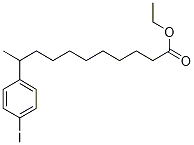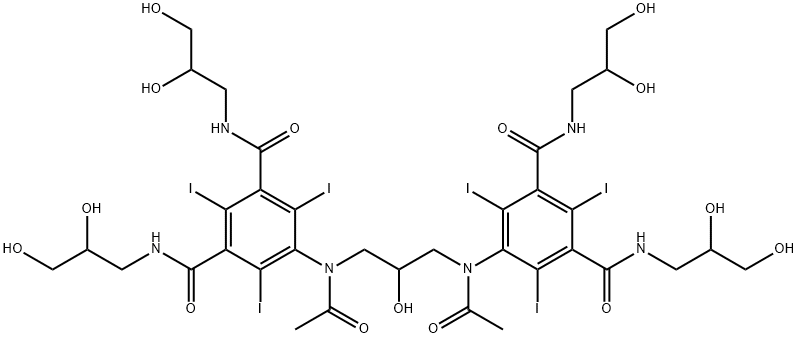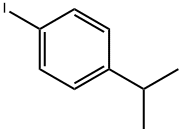iofendylate
- CAS NO.:99-79-6
- Empirical Formula: C19H29IO2
- Molecular Weight: 416.34
- MDL number: MFCD00867941
- EINECS: 202-787-8
- SAFETY DATA SHEET (SDS)
- Update Date: 2022-12-21 16:56:50

What is iofendylate?
Originator
Pantopaque,Lafayette,US,1944
The Uses of iofendylate
Iofendylate is a compound that is used as a contrast medium.
Indications
Iophendylate is used as a contrast agent to locate spinal tumors.
Background
Iophendylate is a mixture of isomers used as contrast medium, mainly for brain and spinal cord visualization. Iophendylate is a myelographic oil-ester (U.S. Patent 2,348,231). Iophendylate, which was never shown to be safe, was initially introduced for use in small amounts (1-2cc) for locating spinal tumors. It next appeared on the world scene for high volume (12-15cc), routine use, in diagnosing disc herniations. A number of clinicians have published on the dangers of oil myelography. In 1942 Van Wagenen (a neurosurgical colleague of Warrens, at the University of Rochester) identified Iophendylate as causing chemical meningitis in 30 patients where "space-displacing masses within the spinal canal were suspected".
Manufacturing Process
60 volumes of ethyl undecylenate is introduced gradually at 7° to 8°C during 35 minutes to a well-cooled mixture of 52.5 parts of aluminum chloride and 150 volumes of iodobenzene. The mixture is decomposed with cracked ice and dilute hydrochloric acid. The iodobenzene layer is washed with sodium bisulfite solution and with water, and then distilled. The composition of matter having the probable formula, ethyl 4-iodophenyl-undecylate, is a colorless liquid boiling at 196° to 198°C/1 mm, and of specific gravity of 1.26/20°C.
Therapeutic Function
Diagnostic aid (radiopaque medium)
Pharmacokinetics
Iophendylate is a myelographic oil-ester initially introduced for use in small amounts (1-2cc) for locating spinal tumors. Later, it was found to cause adhesive arachnoiditis. Because these substances are hyperbaric once they were placed in the subarachnoid space they would migrate to the distal portion, where they remained, producing progressive scarring.
Metabolism
Not Available
Properties of iofendylate
| Melting point: | 25°C |
| Density | d2020 1.240-1.263 |
| refractive index | nD25 1.5230-1.5280 |
| CAS DataBase Reference | 99-79-6 |
Safety information for iofendylate
Computed Descriptors for iofendylate
New Products
4-Aminotetrahydropyran-4-carbonitrile Hydrochloride (R)-3-Aminobutanenitrile Hydrochloride 4-AMINO-TETRAHYDRO-PYRAN-4-CARBOXYLIC ACID HCL 4-(Dimethylamino)tetrahydro-2H-pyran-4-carbonitrile 3-((Dimethylamino)methyl)-5-methylhexan-2-one oxalate 1,4-Dioxa-8-azaspiro[4.5]decane 5-Bromo-2-nitropyridine Nimesulide BP Aceclofenac IP/BP/EP Mefenamic Acid IP/BP/EP/USP Diclofenac Sodium IP/BP/EP/USP Ornidazole IP Diclofenac Potassium SODIUM AAS SOLUTION ZINC AAS SOLUTION BUFFER SOLUTION PH 10.0(BORATE) GOOCH CRUCIBLE SINTERED AQUANIL 5 BERYLLIUM AAS SOLUTION 2-Bromo-1-(bromomethyl)-3-chloro-5-nitrobenzene 2-Bromo-3-nitroaniline N-(3-Hydroxypropyl)-N-methylacetamide 3-Bromo-6-chloropyridazine 4-ethyl-3-nitrobenzoic acidRelated products of tetrahydrofuran








You may like
-
 1-Methyl-6-oxo-1,6-dihydropyridazine-3-carbonitrile 98%View Details
1-Methyl-6-oxo-1,6-dihydropyridazine-3-carbonitrile 98%View Details
99903-60-3 -
 88491-46-7 98%View Details
88491-46-7 98%View Details
88491-46-7 -
 1823368-42-8 98%View Details
1823368-42-8 98%View Details
1823368-42-8 -
 2-(3-(tert-butyl)phenoxy)-2-methylpropanoic acid 1307449-08-6 98%View Details
2-(3-(tert-butyl)phenoxy)-2-methylpropanoic acid 1307449-08-6 98%View Details
1307449-08-6 -
 Ethyl 3-(furan-2-yl)-3-hydroxypropanoate 25408-95-1 98%View Details
Ethyl 3-(furan-2-yl)-3-hydroxypropanoate 25408-95-1 98%View Details
25408-95-1 -
 2-Chloro-5-fluoro-1-methoxy-3-methylbenzene 98%View Details
2-Chloro-5-fluoro-1-methoxy-3-methylbenzene 98%View Details
1805639-70-6 -
 1784294-80-9 98%View Details
1784294-80-9 98%View Details
1784294-80-9 -
 Lithium ClavulanateView Details
Lithium ClavulanateView Details
61177-44-4